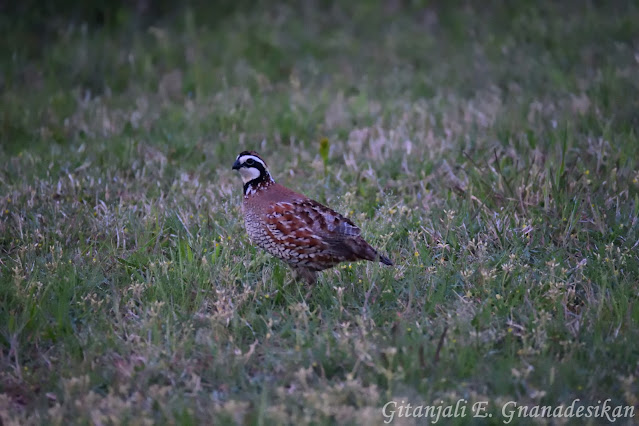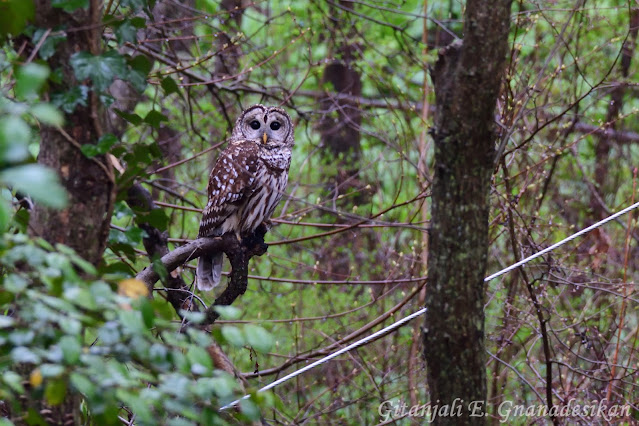As my regular blog readers know, it's been a rough year. Mum finished chemo (for now) a couple weeks ago and then had a PET scan to evaluate her progress. So we decided to take a long weekend away to distract ourselves—while we awaited the results—and to try traveling on a small, manageable scale. So we visited the islands of Chincoteague and Assateague, just a three-hour drive away. Although Mum's energy and stamina were still severely limited, we were able to do some walks and drives through the park and saw lots of beautiful ponies, birds, and other wildlife. Success!
Most folks who have heard of Chincoteague probably first heard of it as a kid, reading Misty of Chincoteague by Marguerite Henry. That was certainly my first exposure, from the same copy Dad had read as a kid too. Anyway, we stayed at Refuge Inn on Chincoteague Island, which is just outside of the combined Chincoteague National Wildlife Refuge/Assateague National Seashore park (which, somewhat confusingly, are both on Assateague Island, just across a bridge). Refuge Inn boasts its own herd of six ponies, as well as a lovely marsh observation deck (from which I heard but couldn't get a good view of several Clapper Rails).
Our first morning in the park, we started with the Lighthouse Trail, a quick 0.25 mi trail leading to the Assateauge Lighthouse, which is the most iconic landmark of the park.
Walking back towards the main road, we saw the most adorable little (~2 in) Eastern Box Turtle (Terrapene carolina carolina).
The main road through the park, Beach Road, was lined with blooming Bristle Thistles (Cirsium horridulum).
And from the road itself there were beautiful views of both ponies and birds...
 |
| There were many of these spectacular Tricolored Herons (Egretta tricolor) in the park! |
 |
| Little Blue Heron (Egretta caerulea) |
 |
| Great Egret (Ardea alba) |
We walked a few of the trails, where I documented various plant species, and we saw a couple of Fowlers Toads (Anaxyrus fowleri).
Off the Woodland Trail, there was a perfect pony overlook.
Although peak tourist season here is in July, for Pony Penning Day, early May was a perfect time to see all the young foals.
It was pretty spectacular how you could look out at the horses...
And then shift your focus and see gorgeous egrets, glossy ibis, and other birds in the foreground.
Now this might sound a little odd, but Chincoteague National Wildlife Refuge is a "Squirrel Sanctuary" (as we read at the visitor's center). Specifically the Delmarva Fox Squirrel (Sciurus niger cinereus) almost went extinct due to deforestation in the rest of Virginia and Maryland. But sometime around 1970, a small population was brought to Chincoteague National Wildlife Refuge and has thrived. We enjoyed seeing them throughout the park (and—of course—calling out "squirrel!" each time).
 |
| Although they don't look dramatically different from the very common eastern gray squirrel, these fox squirrels are more silvery, with larger bodies and longer tails. |
If you keep driving through the park, you quickly reach the other side of the barrier island, which is home to the Assateague National Seashore. One of the most ubiquitous—and loud—inhabitants is the distinctive Laughing Gull (Leucophaeus atricilla).
 |
| I always enjoy looking at and photographing birds head on, because they look so goofy! |
 |
| Willet (Tringa semipalmata) |
 |
| Sanderling (Calidris alba), one of the most adorable shorebirds |
And of course various other gulls sitting, walking, and soaring along the shore.
 |
| Great Black-backed Gull (Larus marinus) |
 |
| Juvenile gulls are notoriously difficult to identify. |
Driving back from the seashore, we saw Dunlins, Terns, and various other birds in the Swan Cove Pool.
 |
| Dulin (Calidris alpina) |
 |
| Terns were quite common throughout the park. I think they were mostly Forster's Terns (Sterna forsteri), but terns are also rather challenging to identify. |
Our last evening, Dad and I took an extra walk on the Marsh Trail around dusk, and I saw my first Northern Bobwhite (Colinus virginianus)!
Happily, we learned after the trip that the results from the PET scan were very good, all things considered. We are very thankful.























